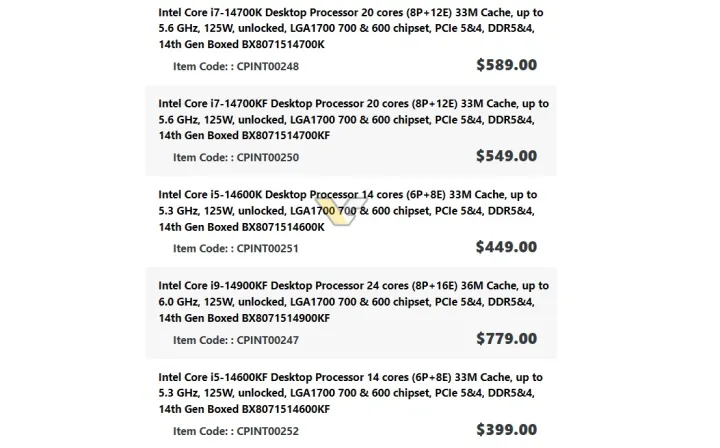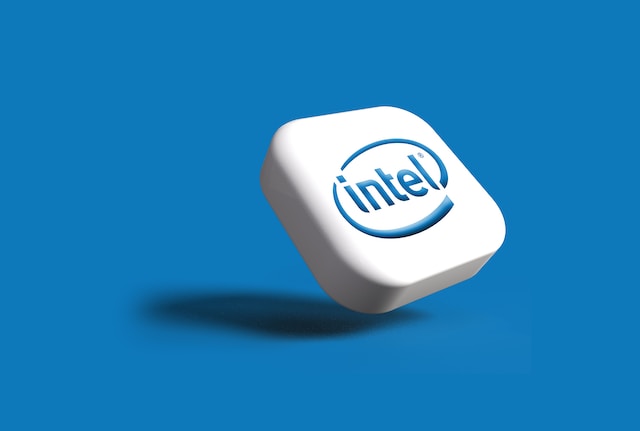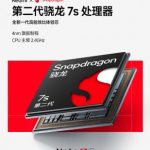We are likely just a few weeks away from the release of Intel’s Raptor Lake refresh, and although Intel has remained tight-lipped about it, intriguing details have started to emerge. Today, we have obtained a glimpse of the pricing for most of the upcoming lineup, and it appears that price increases are on the horizon, albeit relatively minor ones.
Anticipating a price hike for the Raptor Lake refresh was to be expected, and it seems this expectation is materializing. According to information shared with VideoCardz, a Canadian retailer called Canada Computers briefly listed the majority of the 14th-Gen lineup. While the CPUs themselves were not directly listed, they could be located by searching for their respective product names, giving us a sense of what to anticipate. It’s important to note that these prices are in Canadian dollars.
The flagship processor of the lineup, the Core i9-14900K, was not listed, but the Core i9-14900KF appeared with a price tag of $779. The next in line, the Core i7-14700K, was priced at $589 Canadian dollars, equivalent to approximately $430 USD at the time of this writing, while the KF variant was listed at $549. The Core i7-13700K currently retails for around $415 USD. The store also accidentally revealed the pricing of the Core i5-14600K at $449 Canadian dollars and the Core i5-14600KF at $399 Canadian dollars.
Overall, it appears that price increases across the entire lineup will range from 0% to around 7%. The Core i9-14900K is expected to see a similar price increase as the KF model, amounting to a 5% increase over its 14th-Gen predecessor.

Without precise specifications for each processor, it is challenging to determine whether these price hikes are justified. However, they are not entirely unexpected. Leak benchmarks and official sources suggest only a marginal performance increase, with some chips purportedly being just 3% faster than their 13th-Gen counterparts. Furthermore, it appears that there will be no changes to the core counts, except for the Core i7-14700K, which is rumored to increase from eight to 12 Efficiency cores.
In essence, these chips seem almost identical to their predecessors, but with slightly higher price tags. The price difference is unlikely to be significant enough to deter buyers, but given its small size, it may make people less inclined to opt for 13th-Gen chips.
Intel’s decision to shift from the 13th-Gen to the 14th-Gen nomenclature may attract some business, as these are entirely new products. However, beneath the surface, there isn’t much that’s genuinely new. With AMD also offering highly competitive chips at similar or lower price points, Intel’s Raptor Lake refresh might not make as big a splash as anticipated.









